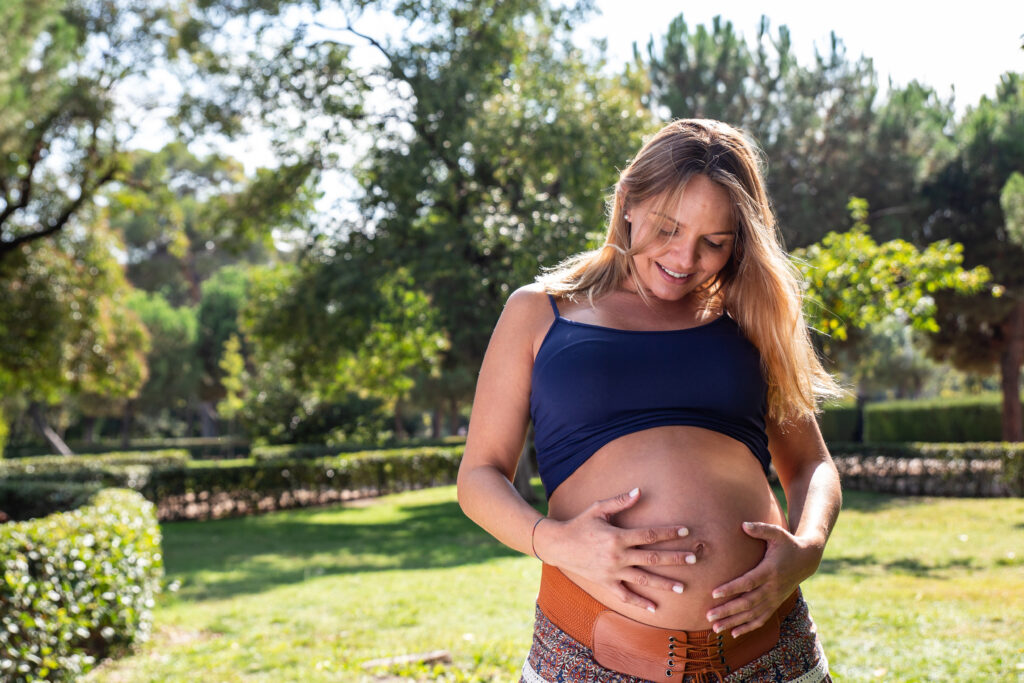The experience of being pregnant is amazing and involves numerous mental and physical changes. Differentiating between labor contractions and gas sensations is a frequent experience that can be confusing and anxiety-inducing. It is important for expectant moms to know the difference between these feelings as the due date draws near. Ten methods are provided here to distinguish between labor contractions and gas.
Location of Pain
Gas: Gas pains are typically felt in the abdomen, frequently in the area of the belly button or higher up. The back and stomach may also experience pain. This is due to the fact that gas passes through your intestines, which are widely dispersed throughout your abdominal cavity. The way the gas passes through different sections of your intestines may cause the pain associated with it to change.
Labor: Usually beginning in the lower back, labor contractions progress to the front of the abdomen. They frequently start off as a lower abdominal tightness that gets progressively worse. Labor pain doesn’t wander about arbitrarily like gas pain does. The uterus is contracting when the contraction pain radiates in a more regular way, frequently encircling from the back to the front.
Consistency
Gas: The onset and duration of gas pain might vary. It may have a prickly, spastic, or constricted feeling. Since gas pains are frequently caused by irregular digestion processes, their irregular timing is a defining characteristic. After eating, especially if you’ve had something that increases gas production, like beans or carbonated drinks, you may experience gas discomfort.
Labor: Consistent and regular contractions occur during labor. They exhibit a recognizable pattern, becoming more frequent and intense with time. Early labor contractions may begin lightly and widely apart, but they will eventually intensify and move closer together, forming a regular rhythm. It is important to time these contractions to avoid confusion with irregular gas pains.
Duration
Gas: The pain associated with gas may subside after passing gas or having a bowel movement, lasting anywhere from a few seconds to several minutes. Actions that aid in the expulsion of the gas can frequently reduce the discomfort, which may be severe but transient. The main sign that the discomfort was caused by gas is the relief experienced after passing gas.
Labor: Regardless of position or activity, labor contractions endure between thirty and seventy seconds each. Contrary to gas pain, labor contractions do not subside quickly or following bowel movements. As labor goes on, they continue and get stronger and longer, showing that the body is getting ready to give birth.
Relief with Movement
Gas: Moving around, shifting positions, or taking a stroll can all help reduce gas discomfort. By accelerating the gas’s passage through the intestines, these actions may help relieve the condition. Gas pain can occasionally be reduced by gently rubbing your abdomen or by lying down on your side.
Labor: While it may assist to manage labor discomfort, moving about won’t halt the contractions. With movement, contractions continue and could even get stronger. While some women find that moving or walking helps better control the pain, the contractions themselves still happen on a regular basis.
Response to Antacids or Gas Relievers
Gas: Taking gas relievers available over-the-counter or antacids will help reduce gas pain. Medication such as simethicone can relieve discomfort by dissolving gas bubbles in the intestines. Additionally, antacids can neutralize stomach acid, which lessens indigestion-related gas and bloating.
Labor: Gas relievers and antacids have little effect on labor contractions. Taking these pills won’t make the discomfort go away; it’s probably labor. These treatments won’t relieve labor pain because it comes from uterine contractions rather than the digestive system.

Correlated Symptoms
Gas: Common signs of gas pains include burp, bloating, and the feeling that you need to pass gas. Additionally, the passage of gas through the intestines may generate a gurgling or rumbling sensation in your stomach known as borborygmi.
Labor: Additional symptoms like a bloody show, breaking water, and increased vaginal discharge may be present together with labor. These are unmistakable signs that your body is getting ready to give birth. The amniotic sac rupturing, which indicates that labor is either about to begin or is already underway, is referred to as the “bloody show,” which is the mucus plug passing from the cervix.
Intensity of Pain
Gas: Although the pain’s strength varies, it usually starts suddenly and sharply. Usually, it gets better after gas. Although the pain is usually unbearable and may even result in brief periods of incapacitation, it usually goes away after the gas is released.
Labor: The pain during labor begins softly and then gets worse. Most people describe the discomfort as more of a tightness, profound feeling. The contractions get harder and more painful as labor goes on, frequently necessitating the use of painkillers or other management strategies.
Timing
Gas: The occurrence of gas pain is sporadic and devoid of a regular schedule or trend. It has no consistent pattern, can happen at any time, and is frequently connected to eating or drinking behaviors. Gas discomfort is less likely to be mistaken for labor contractions because it is sporadic in nature.
Labor: The contractions that occur during labor have a regular rhythm. You can tell if the contractions are getting closer together by timing them. The progression of labor is indicated by shorter time intervals between contractions and longer, more severe contractions themselves.
Effect of Eating
Gas: Gas pains can be brought on by eating certain meals, particularly ones that are heavy in fiber or create gas. Common offenders include foods like broccoli, cabbage, beans, lentils, and fizzy drinks. You can detect items that may produce gas and related discomfort by keeping an eye on your diet.
Labor: Eating or drinking has no effect on labor contractions. They go on no matter how much food is consumed. The existence or strength of labor contractions is unaffected by what you eat or drink, even though staying hydrated and sustaining energy levels are crucial during labor.
Hydration
Gas: By facilitating the passage of gas through the intestines and improving digestion, drinking water can occasionally assist reduce gas pain. Constipation, which can also result in gas and bloating, can be avoided by drinking enough water.
Labor: Although drinking water will help you stay hydrated, it won’t stop your contractions. While staying properly hydrated helps assist the body’s efforts and help maintain energy levels during labor, it won’t change the frequency or intensity of contractions.
Conclusion
It might be difficult to distinguish between labor contractions and gas sensations, particularly for new mothers. Recognizing these variations helps reduce worry and guarantee prompt medical assistance when necessary. It’s advisable to get advice and reassurance from your healthcare professional if you’re ever unsure. You can feel even more at ease if you attend prenatal classes and talk to your doctor about these symptoms as you get ready for delivery.
Recall that every pregnancy is different and it’s important to pay attention to your body. Whenever necessary, seek professional guidance and follow your intuition.


